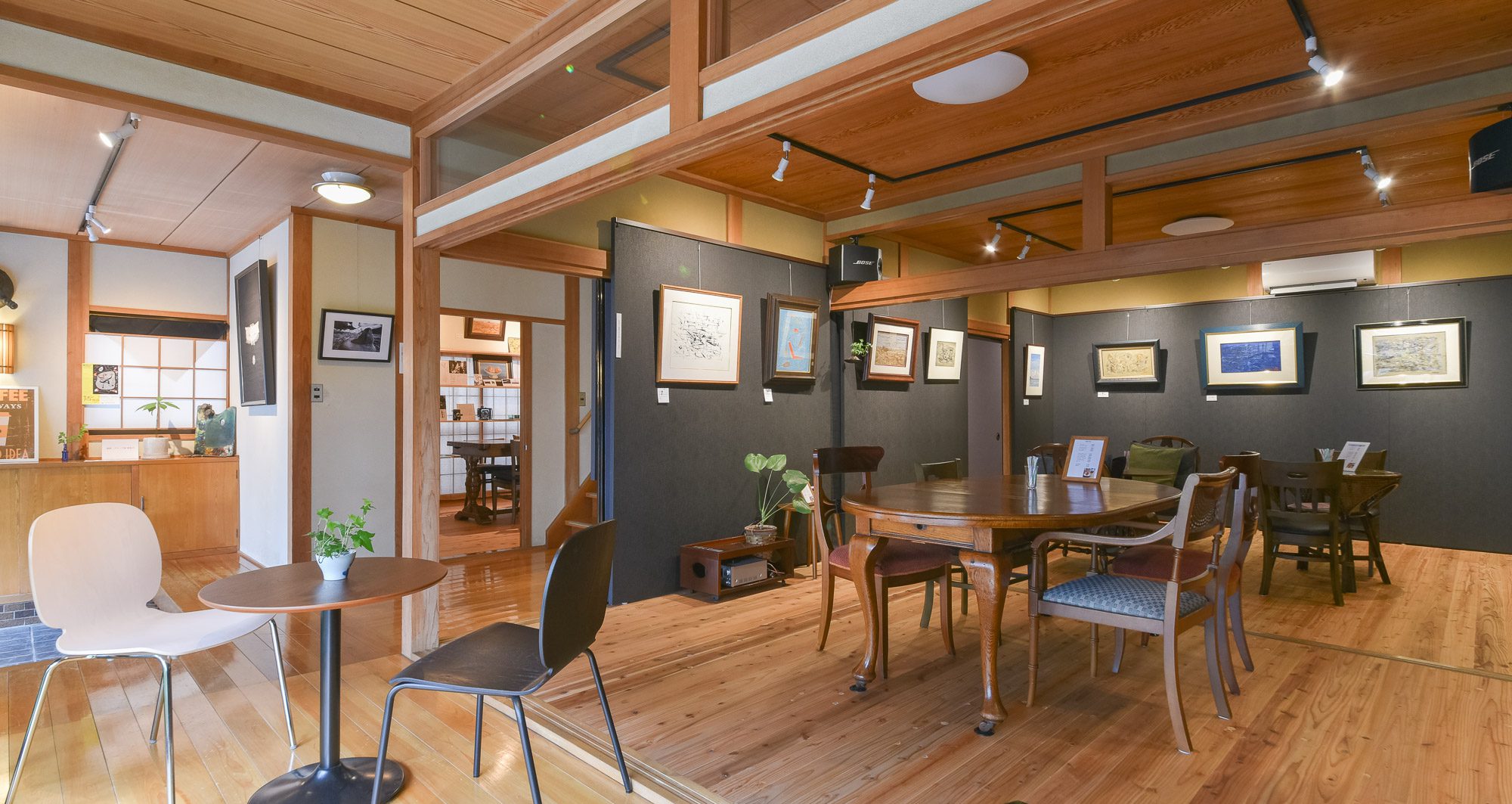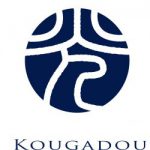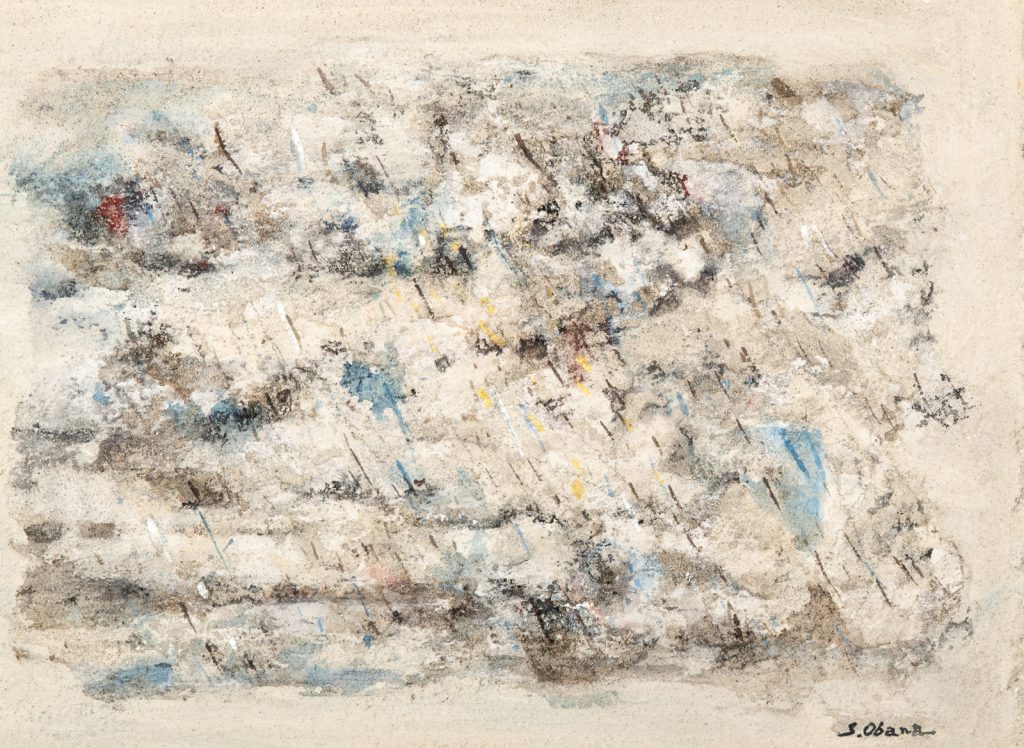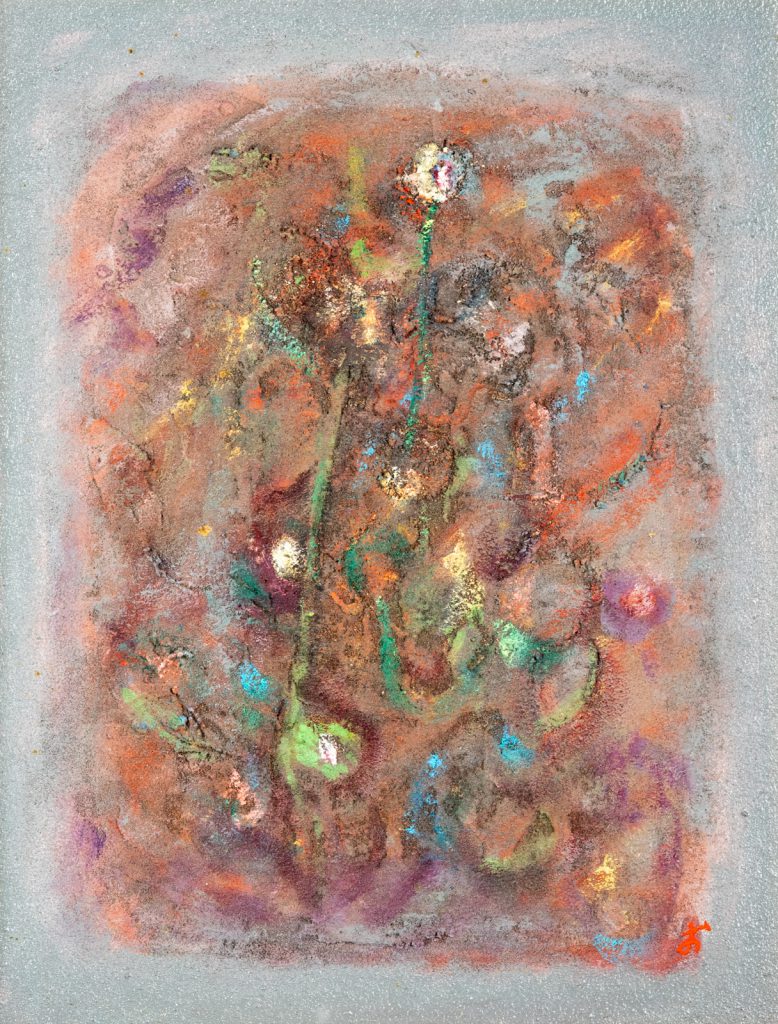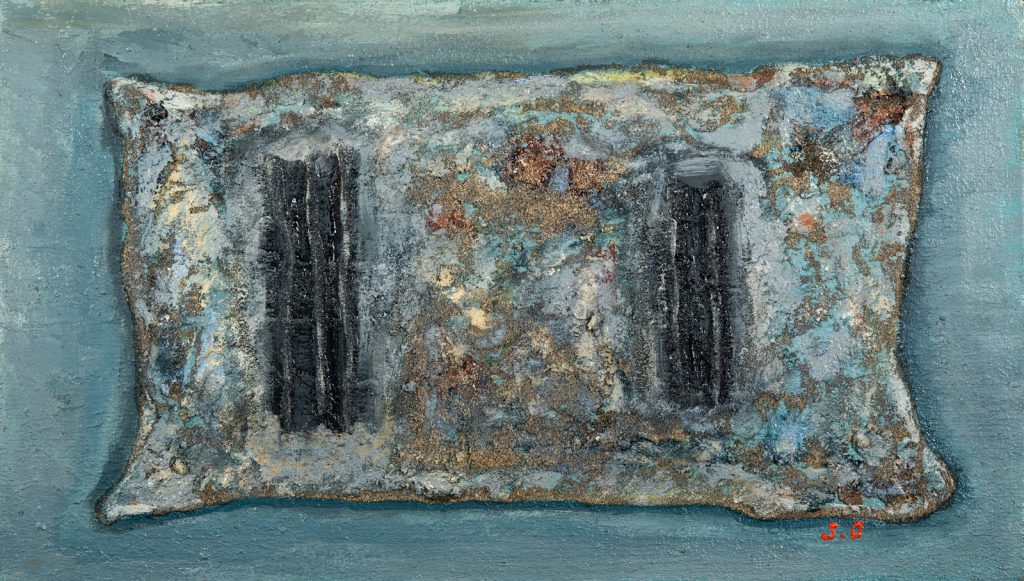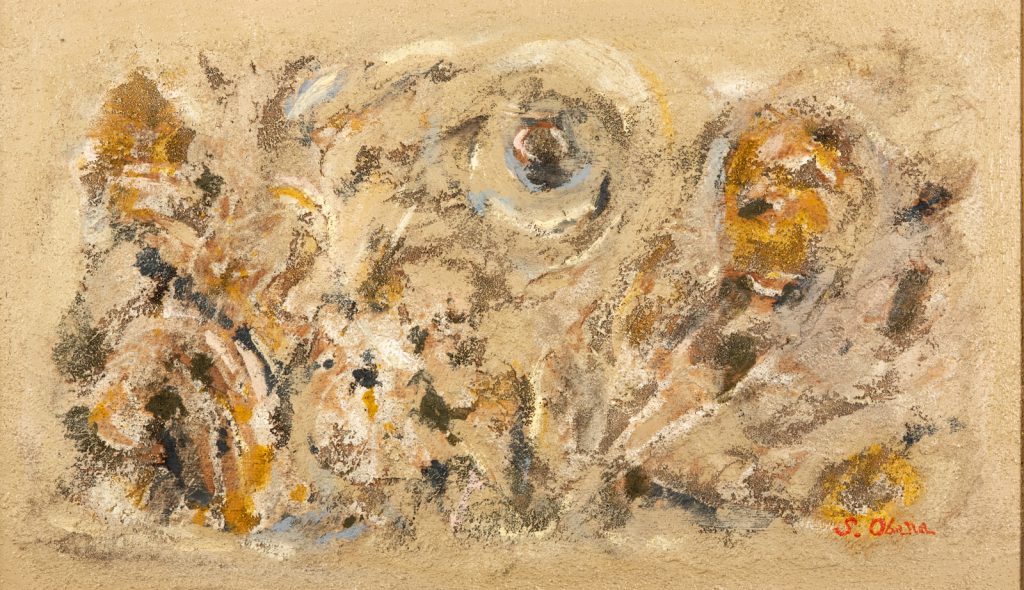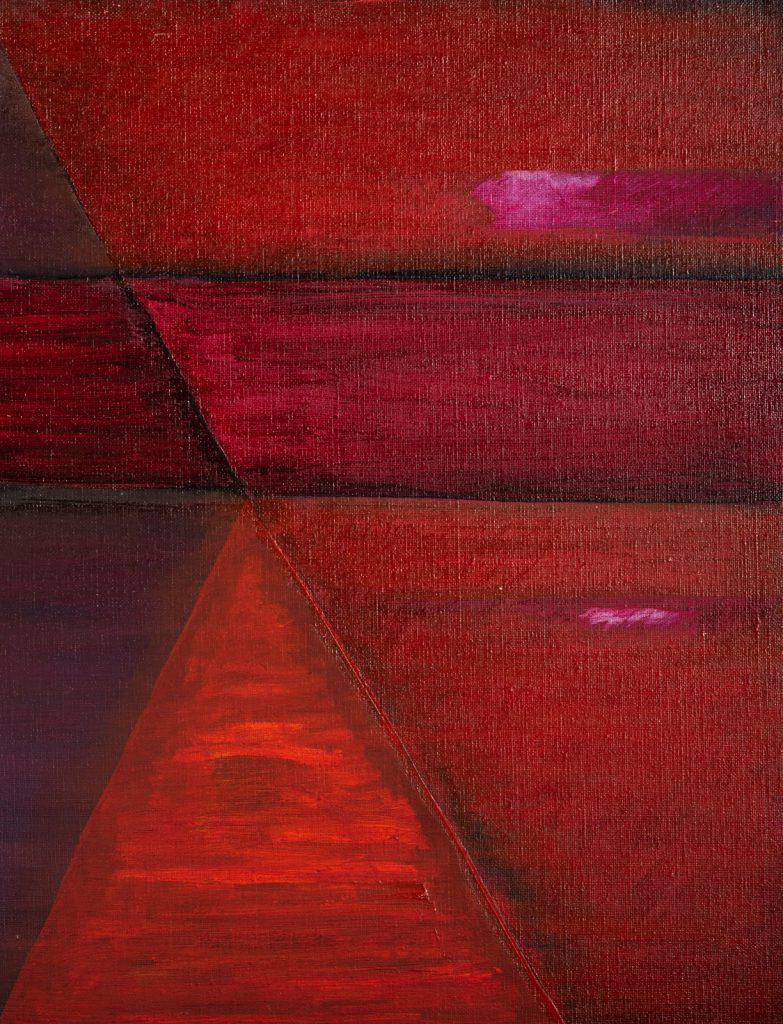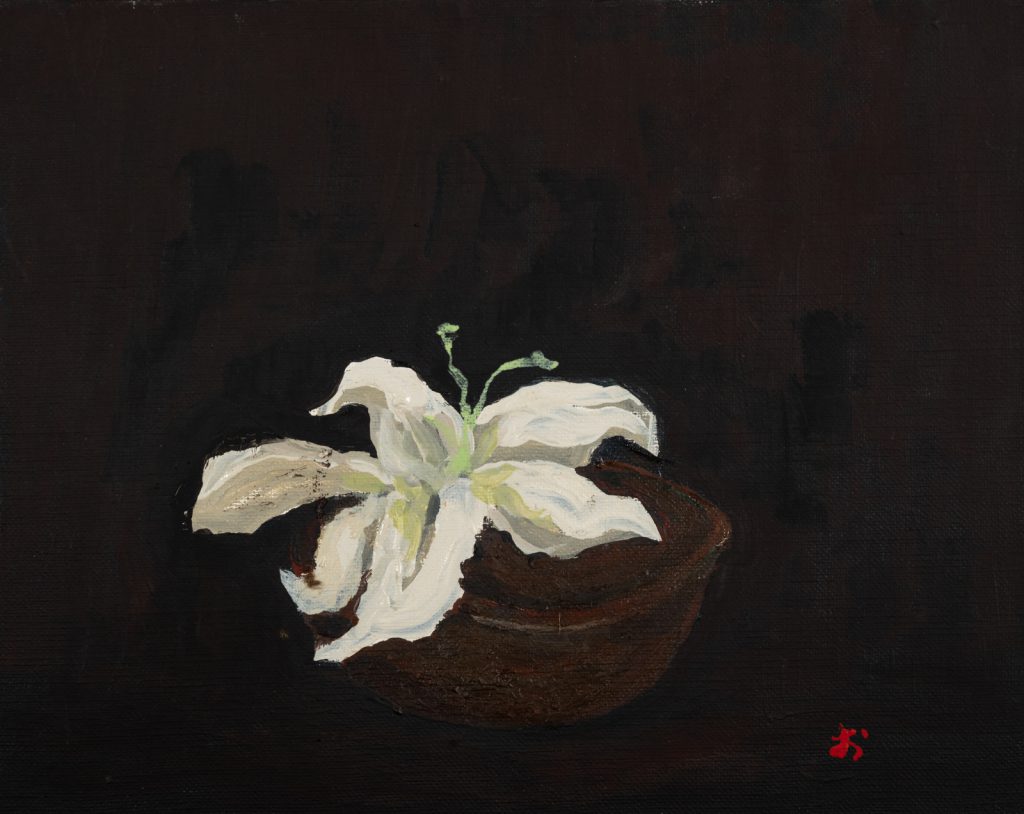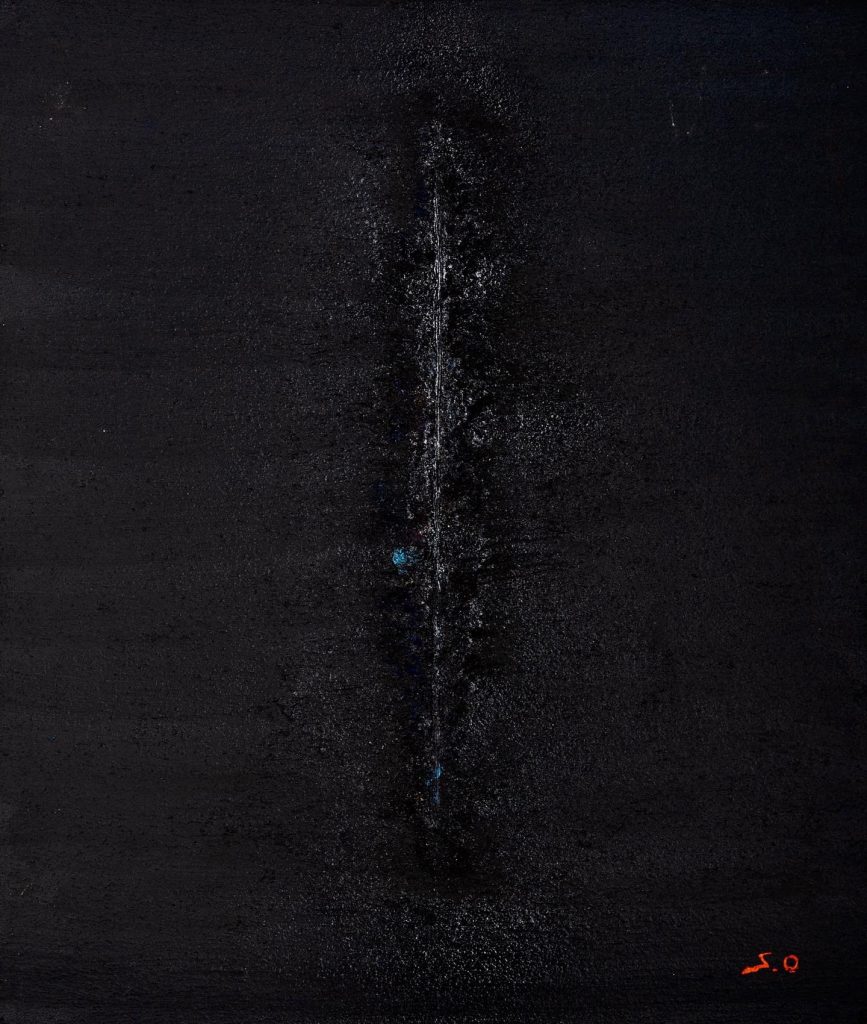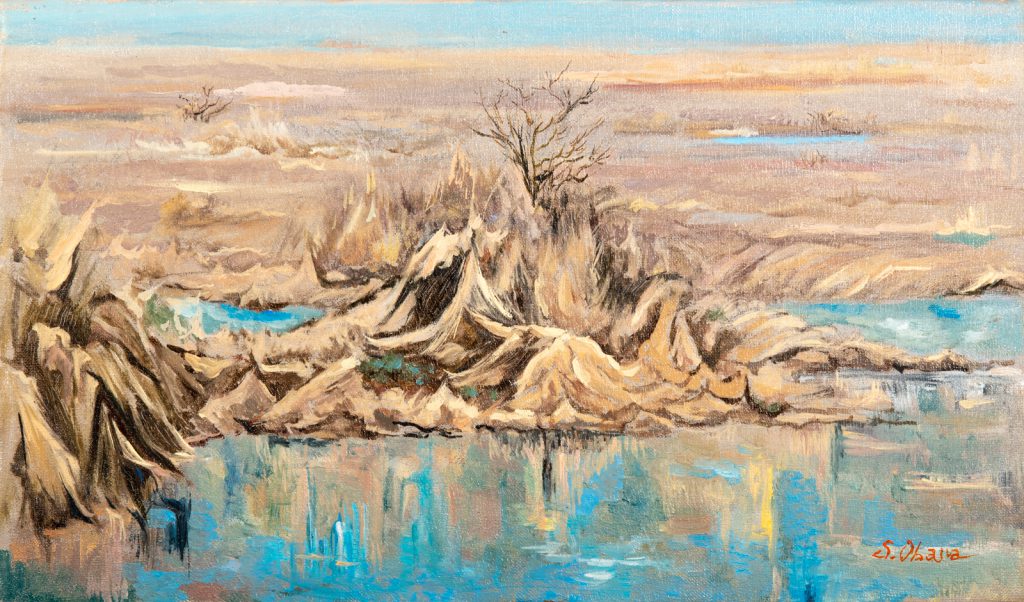
「春」1993 440×320
「春の庭」2001 F6
「春の雨」1989 M4
「春が来た そして草の囁き」 1990 M8
「早春」1997 SM 尾花成春

OBANA Shigeharu drew a lot of pictures titled spring.
「海」1997 F6 尾花成春
無題 2010 F3 尾花成春
音のある風景
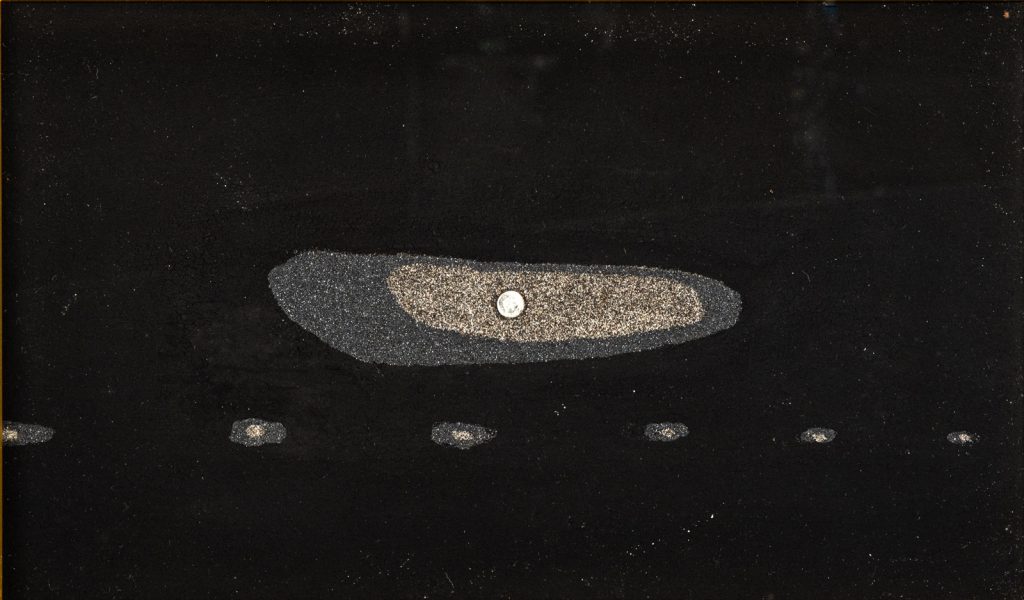
音のある風景 1991 M6
以下、絵の裏に書き残してあった尾花成春の文です。
1991年11月 大分県佐賀関の海に行く。
300m位の海浜が黒い石ころに埋め尽くされ、
波の動きに応じてその黒い石ころが転がり美しい音を
出していた。
純粋な音、人間が自然の音を音楽として意識した音はこういう
ものではなかったかと思いをはせる。
Landscape with sound
November 1991
I went to the sea in Saganoseki, Oita Prefecture.
The seashore of about 300m is filled with black stones.
The black stones rolled in response to the movement of the waves, and the stones made a beautiful sound.
Pure sounds, sounds that humans are conscious of natural sounds as music are like this
I wonder if it was something.
#尾花成春 #九州派 #obanashigeharu #kyusyuha #abstract #contemporaryart #abstractexpressionism
「海の風景」2001 F10
「海の風景」2001 F10 尾花成春
2001年11月に福岡市天神のアートスペース貘で個展を開いた際、読売新聞に掲載された個展評をご紹介します。
元九州派のこの作家はここ10年ほど黒一色の絵を描き続けてきた。合板のパネルに漆喰を塗り、あるいは海岸の細かい砂を敷き詰めて下地を作ったうえに、油絵の具を何重にも塗り重ねる。光沢のない独特の色調は絵の具が漆喰や砂に吸収されることから生じ、部分的に見られる灰色がかったむらは塗った絵の具を金属のヘラでこすり取った跡だ。
おおむね水平に引かれた筆の痕跡も露に残されており、黒一色と言ってもそこには変化に富む微細なニュアンスがちりばめられている。
ミニマリズムとの表面的な親近性に目を奪われて、画面からニュアンスや表情が消し去られていないことを不徹底と見るなら、作品理解の糸口はふさがれてしまう。この作家の黒はモダニズムの還元主義とは全く別の文脈から生まれたものだからだ。
自宅の庭の土をテーブルに盛っただけのものを、「筑後平野」と題して、美術館で発表したのは1970年のこと。以来、この人の手がけてきた形式の上では、抽象の仕事と見える作品はすべて本質において風景の写実だったと言うことができる。
抽象的写実といえば、形容矛盾であるようだが、対象の持つ具体性のリアリティを殺さずに世界を一枚の絵画に再現するという途方もない企てを遂行するには「一即多」というような非論理の論理によるしか道はないだろう。世界を抽象するその仕方自体がモダンな抽象とは違っているのである。
黒の画面を前にして、なにか禅問答を挑まれているような気持ちになるのは、おそらくそいう事情による。草木虫魚に至るまで世界の一切を包み込んで生きさせる豊穣な黒、ということができるだろう。(人)
Shown below is a review in the Yomiuri Shimbun of an exhibition held at Art Space Baku in Tenjin, Fukuoka, in November 2001:
“This former The Kyushu school painter has been painting in solid black for the last 10 years. He applies stucco or spreads the fine sand of the shore over plywood panels to make the groundwork and oil paints in layers. Here, the unique matte color results from the paint being absorbed into the stucco and sand, while the grayish streaks are traces of the paint scraped away with a metal spatula.
While all in black, the painting contains not only clear traces of the brush drawn more or less horizontally but varying delicate nuances of the color in places.
If, fooled by the seeming affinity it appears to have with minimalism, you see the outward nuances and expressions that remain unerased on the picture plane as a sign of its incompleteness, the clue to understanding the work will be lost on you. For this artist’s black is completely different in its origin from its modernist reductionist counterpart.
It was back in 1970 that he presented a piece of soil from the garden at his home simply placed on a table and entitled the “Chikugo Plain” at an art museum. Thus, all ensuing works that looked like abstract works could be essentially described as realistic representations of landscape in all forms ever attempted by the artist.
To speak of abstract realism seems to be a contradiction in terms but the only way to make a tremendous attempt to reproduce the world in a single painting without deadening the reality of its objects in all their concreteness would involve an illogical logic, such as ‘one is many’ characteristic of the Buddhist worldview, whose approach to abstracting the world in itself is quite different from that in modern abstractionism.
This is probably how you feel like you are being challenged with Zen riddles in front of the black picture plane. Indeed, it can probably be best described as a fertile black that envelops and brings to life the whole world, including its plants, insects and fish.”
Thanks to Mr. Ito for translation.
